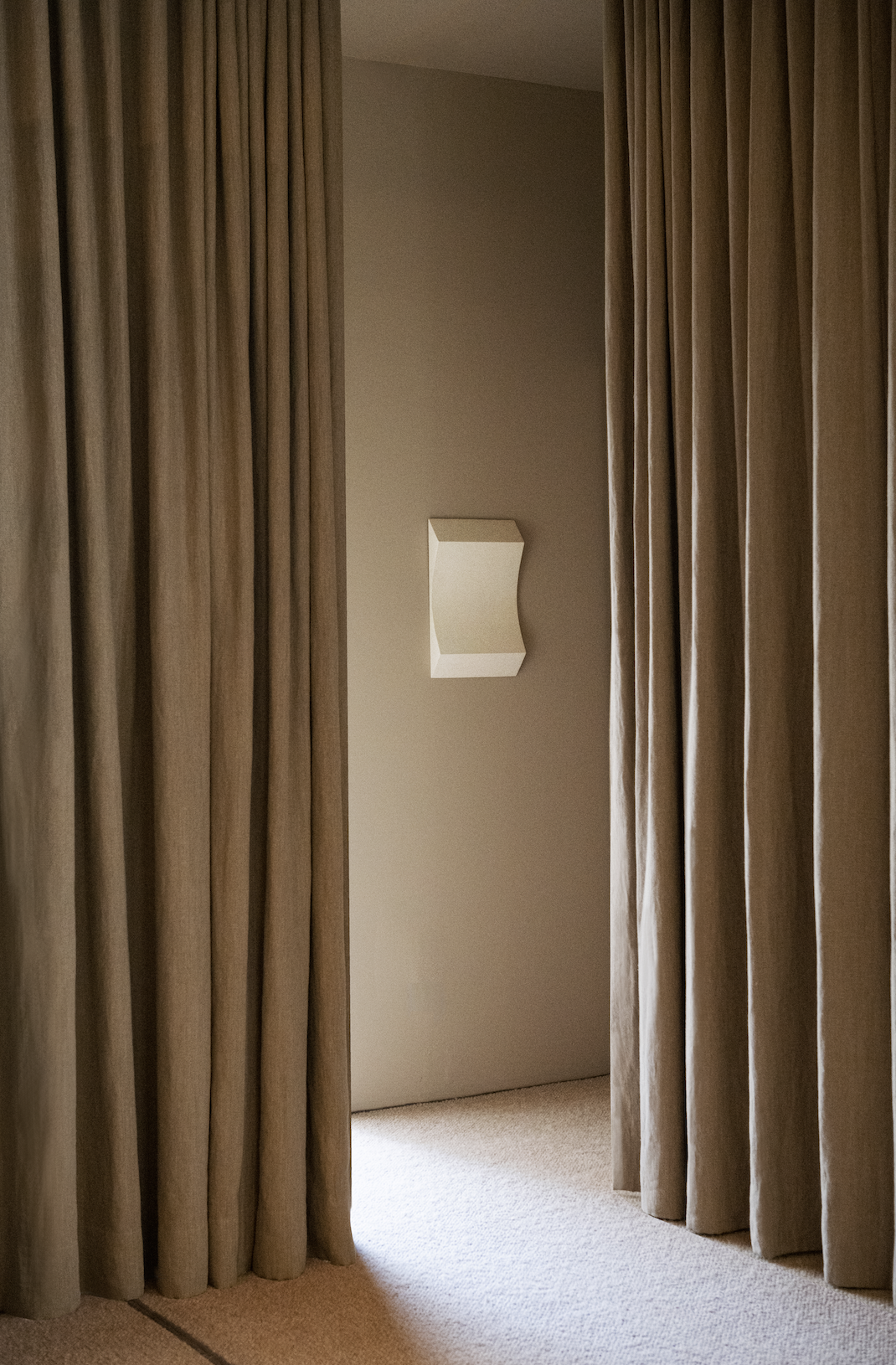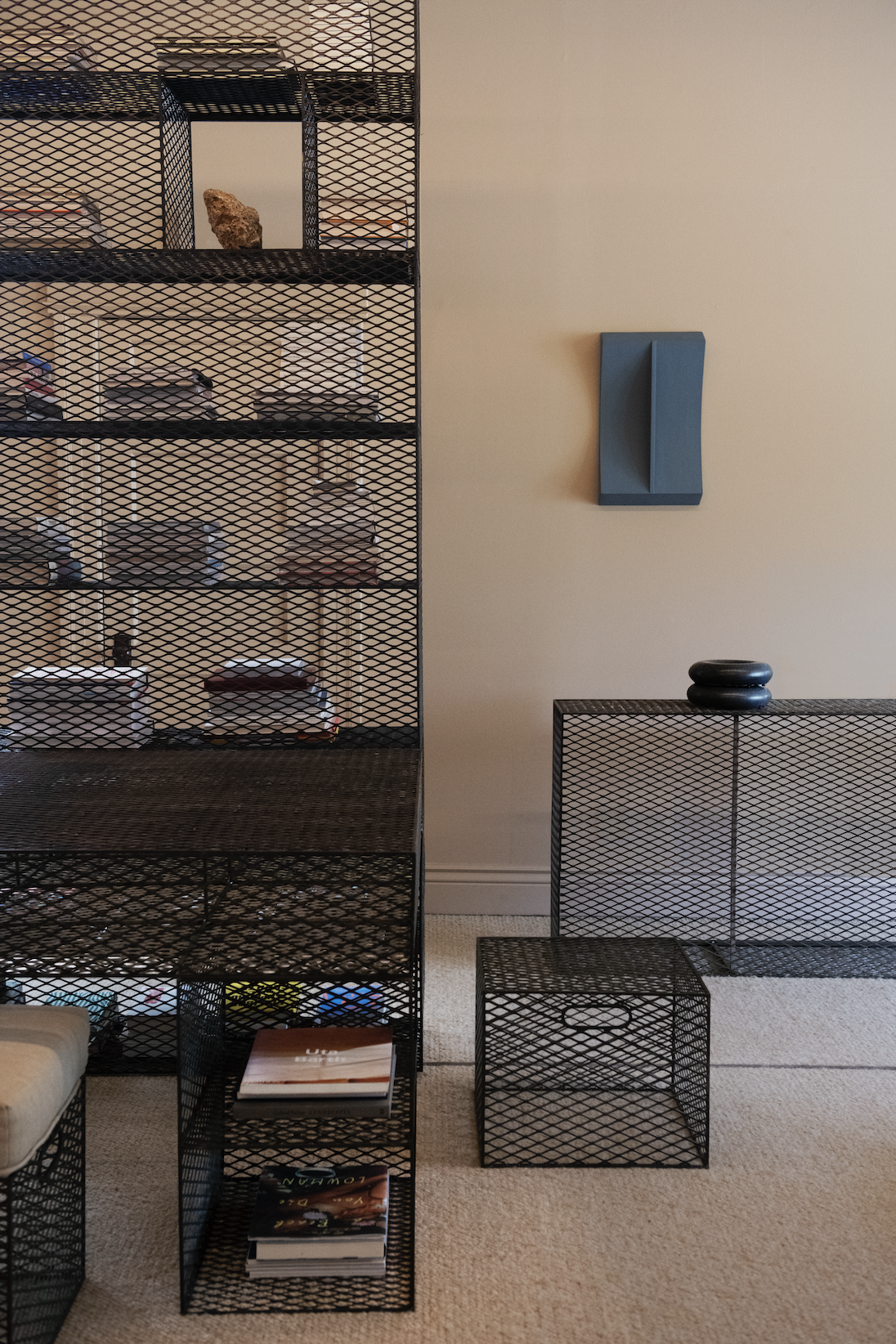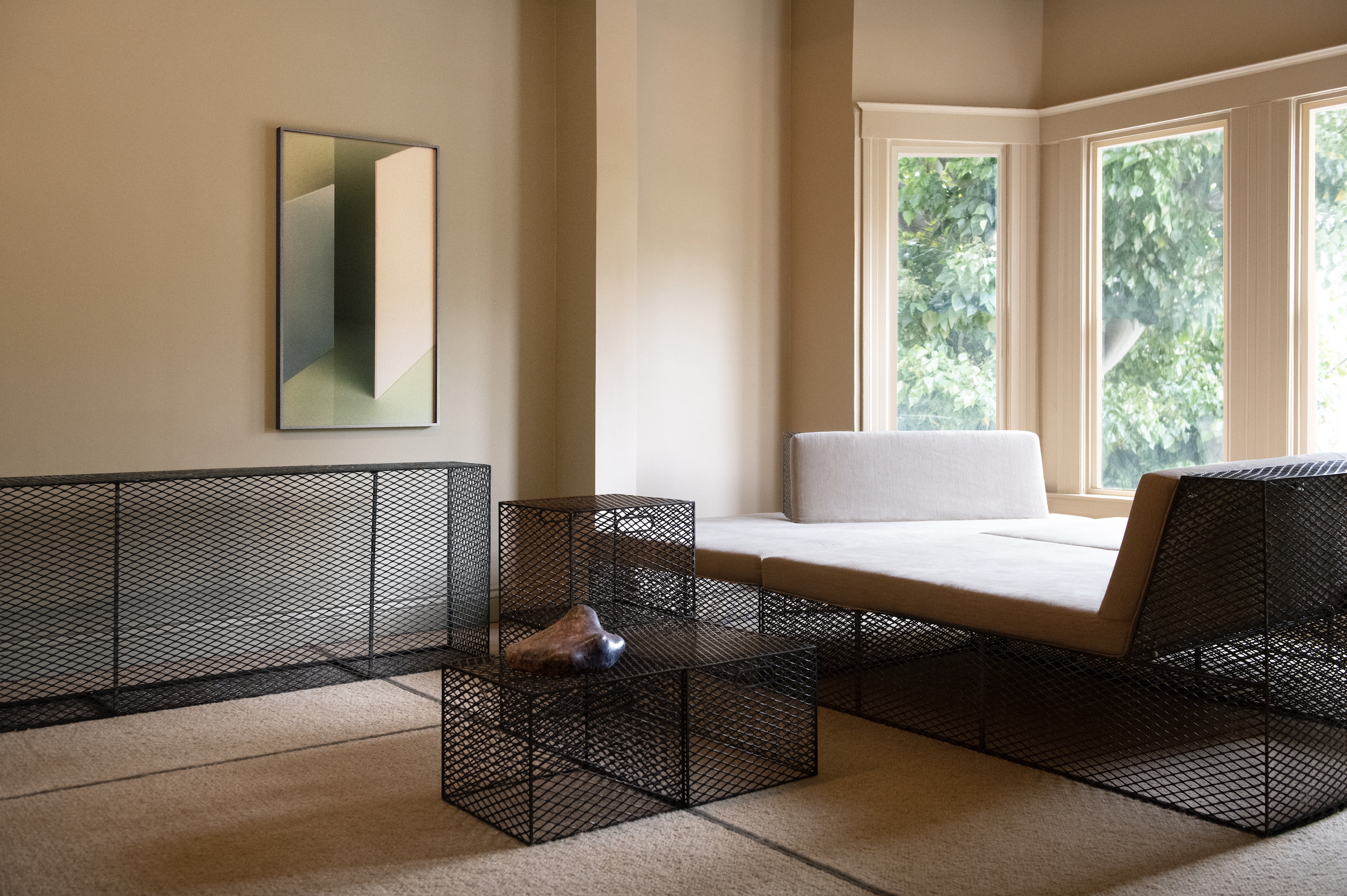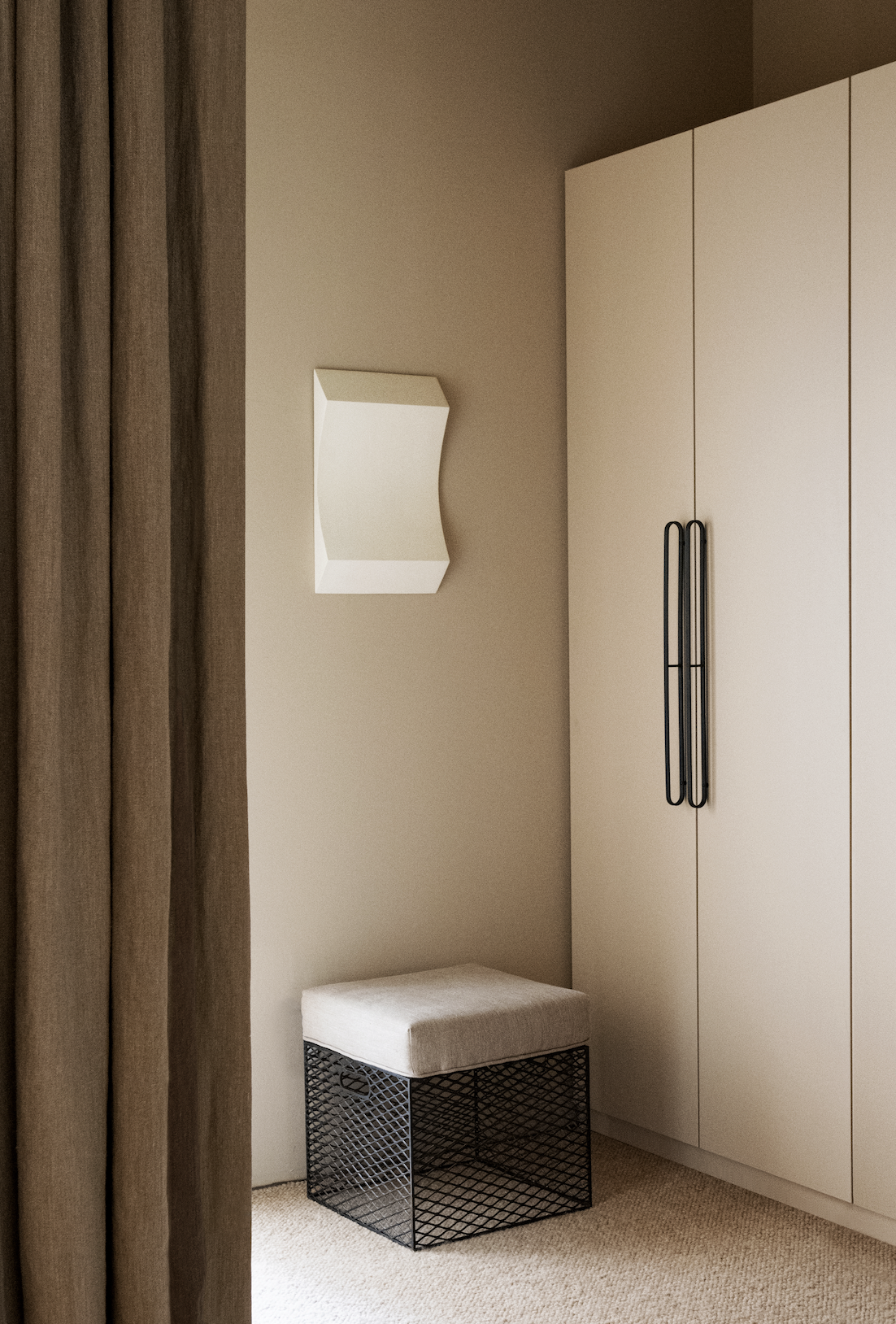




DOG COMMUNITY project SPACE
Adam Weiss did not want to return to the office. The founder of Landscape®, a brand strategy and design studio, had spent the past two years at home working remotely with clients and co-workers. He wanted connection, compassion, a new friend. He got a DOG.
This is the name of the community project space he envisioned in his old office, a converted Victorian in Lower Haight. He asked us at Studio AHEAD, a San Francisco-based design firm, to help bring this idea into being. We imagined neutrals: tatami-style wool carpeting, linen drapes to divide the room—but the goal was no division, a place where people come together away from work. The color palette was perfect for the studio’s diverse programming: exhibitions, conversation, movie screenings, lectures, even parties for no reason but to party. An irreverent, exploratory counterpoint to Landscape®’s branding practice.
When we discussed design ideas with Weiss and his team, he mentioned sharing his extensive library with their clients and the broader public. These books are boldly colored, heavy, works of art themselves, and range from artist monographs, photobooks, and catalogs, to cultural theory, zines, self-published works, and unexpected reference materials. You can read their titles from across the room, because the furniture we designed for them is done in see-through metal mesh. This modular furniture set is fully versatile and includes tables, ottomans, bookcases, a daybed. The pieces foster play and creativity. A bench is sat upright to become a podium. A seating block becomes an art pedestal by removing its upholstered top.
The first event at DOG [E1] was a book launch for Landscape®’s tenth anniversary. The guest list included artists from Oakland, fashion designers from Bolinas, editors from San Francisco, designers, photographers, strategists and business leaders of all kinds from Apple, Rivian, Airbnb, and Google, to local creatives of sundry brands—friends and friends of friends—groups separated by two years of isolation. The room’s openness, its cushiony floors for sitting, its drapery hiding all vestiges of its former office life all became inextricable from the life of the party, and at a time when people needed to party. You could read the book but you could also read the room.
Y E A R : 2022
L O C A T I O N : Lower Haight
P U B L I C A T I O N : Cultured | Yellow Trace
